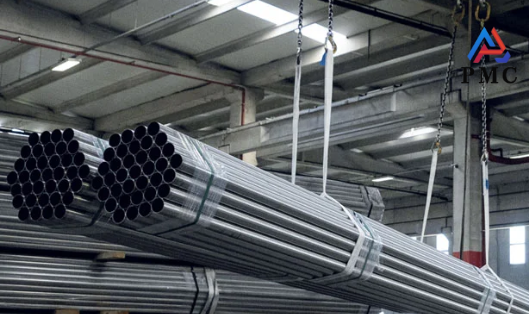
Principles for Selecting Wall Thickness of SMLS Pipe
Selecting the wall thickness of SMLS pipe (seamless steel pipes) is a critical design task, which is directly related to the safety, reliability and economy of the pipeline system. The selection of SMLS pipe wall thickness is usually based on strict engineering calculations and industry standards.
Core principles for selecting smls pipe wall thickness
Meet strength requirements: Ensure that the steel pipe can safely withstand internal fluid pressure, external loads (such as soil pressure, wind and snow loads), deadweight, and other possible stresses (such as thermal stress and vibration stress).
Meet stiffness requirements: Avoid excessive deformation or vibration of the pipeline during operation.
Considering economy: Under the premise of meeting safety and performance requirements, select the most economical wall thickness to avoid waste caused by over-design.
Main factors affecting the selection of smls pipe wall thickness
1. Operating pressure
This is the most important factor in determining wall thickness. The higher the pressure, the thicker the wall required. The maximum working pressure or design pressure is usually taken into account during calculations.
2. Operating temperature
High temperature: As the temperature increases, the yield strength and tensile strength of steel will decrease. Therefore, in high temperature environments, it is necessary to increase the wall thickness or use alloy steel with better high temperature performance. At the same time, the creep effect under high temperature also needs to be considered.
Low temperature: Extremely low temperatures may cause steel to become brittle, placing higher demands on impact toughness. Increased wall thickness may affect the low-temperature toughness of the material, so a balanced consideration is required.
3. Nature of the conveying medium
Corrosion: If the transported medium is corrosive (such as acid, alkali, hydrogen sulfide, etc.), sufficient corrosion margin must be reserved, that is, a certain thickness should be added to the calculated minimum wall thickness, or a more corrosion-resistant alloy steel (such as stainless steel) should be selected.
Abrasiveness: When transporting fluids containing solid particles (such as ore slurry and coal slurry), the inner wall of the pipeline will be worn, and wear allowance must be reserved.

4. Material grade
Different grades of steel have different yield strengths and tensile strengths. The stronger the material, the smaller the wall thickness required under the same pressure. For example, API 5L X70 pipeline steel can use thinner wall thickness than API 5L B grade steel to withstand the same pressure.
5. Mounting and external loads
Installation method: Buried pipelines need to withstand soil pressure and surface loads; overhead pipelines need to withstand wind loads, snow loads, their own weight, and the weight of the medium inside the pipeline.
Support span: The distance between support points affects the bending stress of the pipe.
Seismic loads, vibration loads: In areas prone to earthquakes or near vibrating equipment, pipes may require thicker walls to enhance their ability to resist earthquakes or vibrations.
6. Manufacturing process and standards
Different manufacturing processes (such as hot rolling and cold drawing) and implementation standards (such as API 5L, ASTM A106, GB/T 8163) have regulations on the dimensional tolerance, wall thickness uniformity, and allowable defects of steel pipes. These factors will indirectly affect the final selected wall thickness.
7. Service life
The longer the project's design service life for the pipeline, the more margin may need to be reserved for corrosion and wear, resulting in an increase in wall thickness.
Calculation method and standard basis for wall thickness of smls pipe
The wall thickness of seamless steel pipes is usually not selected based on experience, but is calculated based on professional engineering specifications and standards:
Pressure vessel and piping design codes: such as ASME B31.1 (power piping), ASME B31.3 (process piping), ASME B31.4 (liquid transmission piping systems), ASME B31.8 (natural gas transmission and distribution piping systems), etc.
These standards provide detailed calculation formulas that take into account parameters such as design pressure, design temperature, material allowable stress, corrosion allowance, pipe outside diameter, and weld coefficient (the weld coefficient for seamless pipes is usually 1.0).
Read more: Wall Thickness Deviation Standard of SMLS Steel Pipe
- 【Prev】 : API Drill Pipe Specification
- 【Next】 : Seamless Pipes for Energy Equipment


